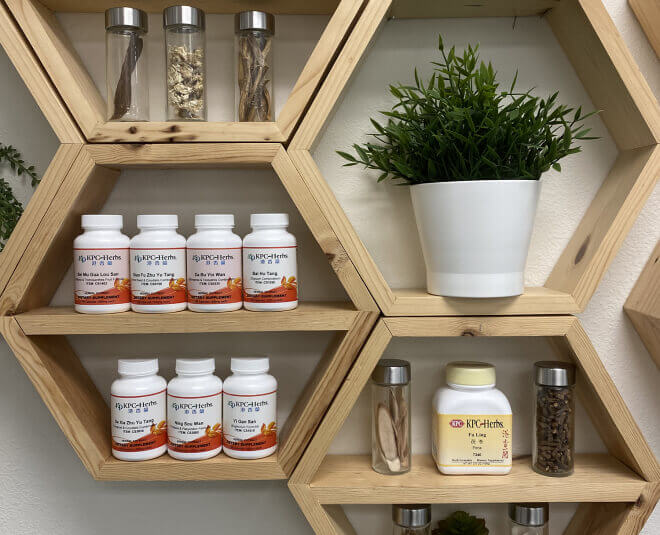Licorice root (gan cao, 甘草), scientifically known as Glycyrrhiza Uralensis, derives from the root of the licorice plant and holds a prestigious status as one of the world’s ancient herbal remedies. Numerous licorice root benefits have been scientifically studied and explored. As a fundamental herb in Traditional Chinese Medicine (TCM), it frequently plays a harmonizing role in herbal formulas and recipes.
Licorice root boasts worldwide popularity, transcending cultural boundaries. Its historical significance is evident in its use by the Egyptians, who incorporated it as a flavoring for the Mai-sus beverage. European tradition even holds that placing a small piece of licorice root under one’s tongue can sustain life for numerous days due to its nutritional and relieving properties.
Within TCM, licorice root is one of the tonic herbs used to help qi deficiency. It replenishes the ‘Four Treasures’—qi, blood, yin, and yang. With a neutral nature and sweet taste, this versatile herb works to help slow acute reactions, facilitate detoxification, and restore both qi and blood. Licorice root works in formulas to aid the heart, lungs, and spleen, showcasing its multifaceted therapeutic potential.
Licorice Root Benefits
In Traditional Chinese Medicine, licorice root receives high regard for its diverse therapeutic properties. It helps replenish qi and address deficiencies in the spleen and stomach. This helps reduce symptoms like fatigue, weakness, poor appetite, and loose bowels. Additionally, it works to moisturize the lungs, expel phlegm, and alleviate various cough-related conditions.
Licorice root is often applied to treat digestive disorders. It may ease muscular spasms associated with blood deficiency and promote the healing of pus-forming infections or inflammatory conditions. Moreover, it serves as a detoxifying agent, helping to clear heat and dispel toxicity.
Beyond its primary therapeutic roles, licorice root plays a valuable part in TCM formulas by moderating harsh or toxic properties. For example, it is integrated into purgative remedies to mitigate the adverse effects of substances like rhubarb and sodium sulfate, reducing the likelihood of abdominal pain. It also acts as a harmonizing agent to balance the interactions of different ingredients within a remedy. Licorice root can serve as a natural sweetener, enhancing the overall taste of the decoction.
Licorice Root Relief
Some licorice root benefits may include addressing issues like palpitations and abnormal heart rhythms. Furthermore, current research suggests additional health benefits, including potent antioxidant, anti-inflammatory, antimicrobial, and anti-cancer properties. It has shown promise in alleviating skin conditions such as acne and eczema, making it a common ingredient in topical gels.
Additionally, licorice root benefits indigestion-related problems like acid reflux, gastroesophageal reflux disease (GERD), upset stomach, and heartburn. It may also assist in treating peptic ulcers resulting from inflammation.
Beyond these benefits, licorice root serves to ease upper respiratory conditions such as asthma. Studies show it shields against bacterial agents contributing to dental cavities and has been used in dental practices.
In Herbal Formulas
Licorice root is a common ingredient in many herbal formulas to help with digestion, heart health, and more. Below are a few formulas that utilize the licorice root benefits.
Ping Wei San is an herbal formula designed to eradicate dampness within the digestive system while promoting comfort in the stomach. It works to dry excess dampness, invigorating the spleen, facilitating the flow of qi, and fostering harmony in the stomach.
Shao Yao Gan Cao Tang addresses spasms and cramps affecting internal organs and muscles, mainly when there is yin and blood deficiency. This formula harnesses its components, licorice root and white peony, to promote the smooth circulation of qi and blood within the liver.
Huang Qin Tang has historically been used for clearing heat, soothing the stomach and intestines, and effectively alleviating spasms and halting diarrhea. Its four main ingredients include Chinese skullcap, jujube, licorice root, and white peony.
High-Quality Ingredients For Formulas
Herbal formulas and Chinese herbal medicine are only as effective and beneficial as their individual ingredients. Using formulas with the highest-quality ingredients ensures the best possible results. It also reduces the likelihood of adverse side effects from unseen contaminants. Sourcing ingredients ethically and sustainably helps reduce risks to the environment and those utilizing the formulas.
At KPC, great emphasis goes toward delivering the utmost quality herbs to distributors, practitioners, and their patients. Our longevity working with herbal formulas is a testament to a distinctive blend of rigorous manufacturing, processing, and quality assurance protocols, deep-rooted industry knowledge, and a sincere commitment to the enduring family values that have fueled our company’s growth.
KPC herbs include only top-tier raw materials that undergo a rigorous assessment process by our in-house professional technicians. This evaluation utilizes our cutting-edge procedures and precision instruments to ensure excellence in quality. Learn more here about KPC’s manufacturing process and the expert care that goes into crafting KPC herbs.
________
*Please note: These statements have not been evaluated by the FDA. This article is not intended to suggest specific treatments for patients or that any supplements mentioned prevent or cure diseases or problems. Before taking any herbs, all patients should discuss their options with a licensed practitioner, including any other medications the patient is currently taking, as there may be contraindications between pharmaceuticals and herbs.

